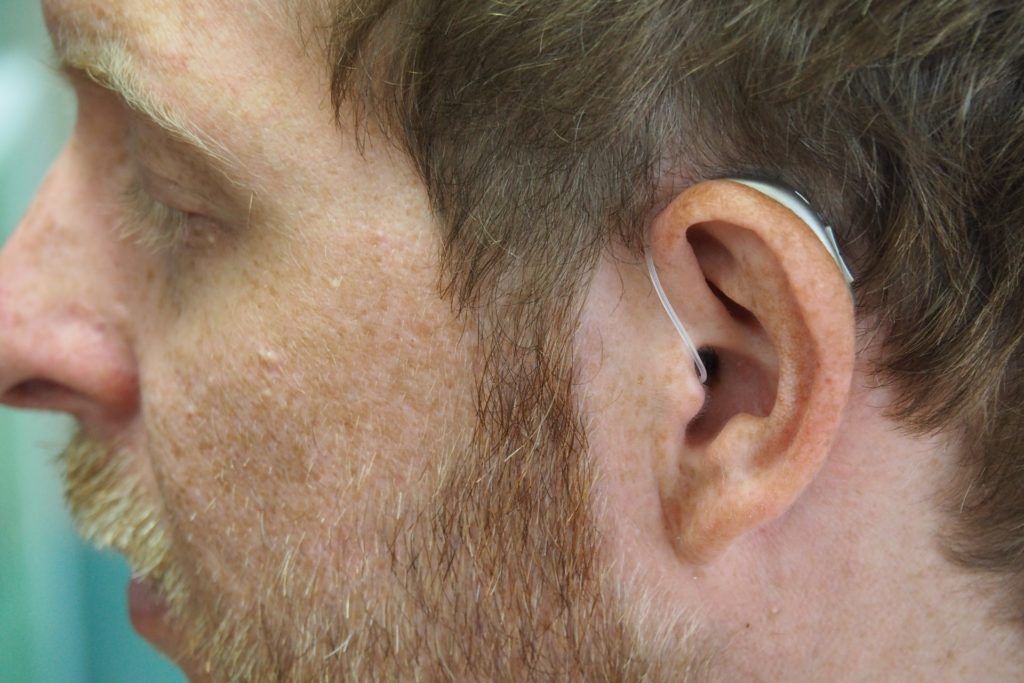In an era where technology enhances comfort and accessibility, one group benefiting significantly is individuals with disabilities. Modern advancements have introduced a wide range of assistive devices, from smart prosthetic limbs to pacemakers, improving life for everyone, regardless of their challenges.
Among these innovations, hearing aids stand out as a a remarkable achievement, significantly improving the quality of life for individuals with hearing loss. The process of fitting a hearing aid is crucial to ensuring maximum comfort and effectiveness.
This guide delves into the steps of the hearing aid fitting process, providing clarity on how to ensure your hearing aids fit perfectly and enhance your auditory experience.
How to Fit a Hearing Aid: 6 Steps
1. Assessment of Your Hearing Aid Needs
Your journey to better hearing begins with a comprehensive assessment by a hearing healthcare professional. This initial step aims to understand the specifics of your hearing loss, including its type and degree, and to identify your listening preferences. Through detailed hearing tests, which include a series of questions and practical listening tasks, an audiologist or hearing professional can tailor a solution that fits seamlessly into your life.
2. Interpreting Hearing Test Results
The results of your hearing test will then be interpreted by the hearing healthcare professional, along with your medical history and any information collected in the intake form, to recommend the most suitable hearing aid technology for you. Interpreting your hearing test results is more than just reading numbers; it’s about understanding how your hearing loss affects your daily life.
3. Hearing Aid Selection
With a clear understanding of your hearing needs, the next step involves selecting the appropriate hearing aids. Equipped with insights from your hearing test, you’ll navigate different options of hearing aids to fit your specific needs. This will require the help of a hearing aid clinic who can help you pick the right technology based on the results of your hearing test. This step focuses on choosing devices that align with your hearing requirements, aesthetic preferences, and lifestyle considerations, ensuring a seamless integration into your daily life.
4. Hearing Aid Fitting Process
The hearing aid fitting process is where technology meets personalization. Your devices are tailored to sit comfortably and work effectively in your ears. Your hearing professional will meticulously adjust your hearing aids for optimal comfort and performance. This includes verifying the fit, conducting speech and additional hearing tests, and making any necessary adjustments to ensure your hearing aids deliver the best possible auditory experience.
5. Practice Listening
Adapting to your new hearing aids involves practice. This phase is designed to help you acclimate to the devices as you learn to interpret sounds more accurately. Initially, you’ll engage in practice listening sessions to familiarize yourself with the new sounds and learn how to manage various settings. This step is crucial for maximizing the benefits of your hearing aids and enhancing your confidence in using them. Your hearing professional will provide guidance on how to get the most out of your hearing aids, ensuring a smooth transition.
6. Tailoring of options to your lifestyle needs
Your relationship with your audiologist or hearing aid dispenser doesn’t end with the fitting. Regular follow-ups are essential to confirm the hearing aids are performing as expected. These sessions allow for fine-tuning and adjustments, ensuring your hearing aids remain perfectly suited to your evolving needs.
FAQ
Do Hearing Aids Need to be Fitted?
Yes, proper hearing aid fitting is crucial to ensure comfort, avoid feedback, and maximize hearing improvement.
How Can I Make My Hearing Aid Fit Better?
Ensuring a good fit involves regular check-ups with your audiologist to adjust the settings and fit as needed. Comfort, security, and optimal performance are key indicators of a well-fitting hearing aid.
How Do Hearing Aids Fit in the Ear?
Hearing aids are designed to fit comfortably within or behind the ear, depending on the style. In-the-ear models sit in the outer ear or ear canal, while behind-the-ear models rest behind the ear, connected to an earpiece.
How Should a Hearing Aid Fit?
A well-fitting hearing aid should be comfortable, secure, and provide clear sound without feedback. It should not cause pain or discomfort, indicating a need for adjustment or a different style.
Where to Get Hearing Aids Fitted?
Hearing aids should be fitted at a reputable hearing center or clinic by qualified professionals, such as audiologists or certified hearing aid clinics, to ensure the best outcome.
Technology has made way for a much more comfortable life for everyone while the hearing aid is one of the most important technological innovations that has come along in a long time. The hearing aid fitting process is the first step toward unlocking the full potential of this technology.
At Horizon Hearing Centres, we’re committed to providing personalized hearing aid fittings using the latest technology, ensuring you leave with devices that enhance your hearing and fit your life perfectly. If you’re considering hearing aids or seeking a consultation, let us help you embark on a journey to better hearing.


Comments are closed.